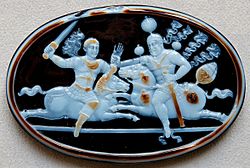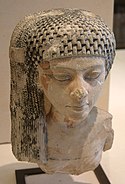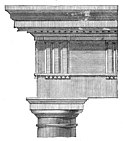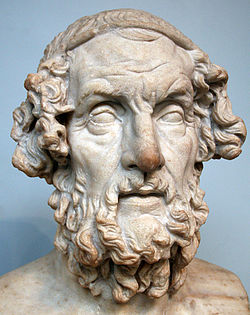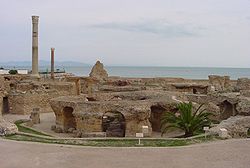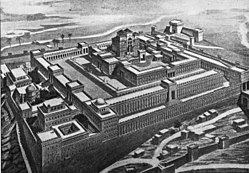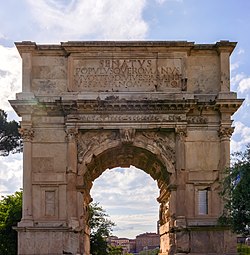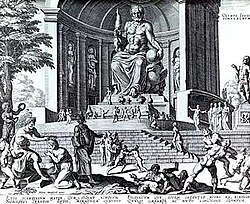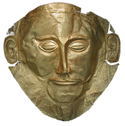Mesopotamia male worshiper 2750-2600 B.C
- Votive figure
- Standing male worshiper, 2750-2600 B.C. (!!!)
Mesopotamia, Eshnunna (modern Tell Asmar) Alabaster (gypsum), shell, black limestone, bitumen; H. 29.5 cm Fletcher Fund, 1940 (40.156)
- In Mesopotamia gods were thought to be physically present in the materials and experiences of daily life. Enlil, considered the most powerful Mesopotamian god during most of the third millennium B.C., was a "raging storm" or "wild bull," while the goddess Inanna reappeared in different guises as the morning and evening star. Deities literally inhabited their cult statues after they had been animated by the proper rituals, and fragments of worn statues were preserved within the walls of the temple.
- This standing figure, with clasped hands and a wide-eyed gaze, is a worshiper. It was placed in the "Square Temple" at Tell Asmar, perhaps dedicated to the god Abu, in order to pray perpetually on behalf of the person it represented. For humans equally were considered to be physically present in their statues. Similar statues were sometimes inscribed with the names of rulers and their families.
Relevantní obrázky
Relevantní články
Umění starověkuUmění starověku zahrnuje sochařství, architektura a další umění nejstarších civilizací, které vzniklo v oblasti Blízkého východu v severovýchodní Africe, v Arábii a v Malé a Střední Asii. Tedy v Mezopotámii, v Egyptě, ve Fénicii, v Palestině, v Persii, ve státech Chetitů, Urartů, Skýtů a v Chorezmu. Druhou oblastí bylo Egejské moře s Krétou a Řecko, Etrurie a Řím. Do třetí patří vzdálenější kultury Dálného východu s Indií a Čínou a předkolumbovská Amerika. .. pokračovat ve čtení










